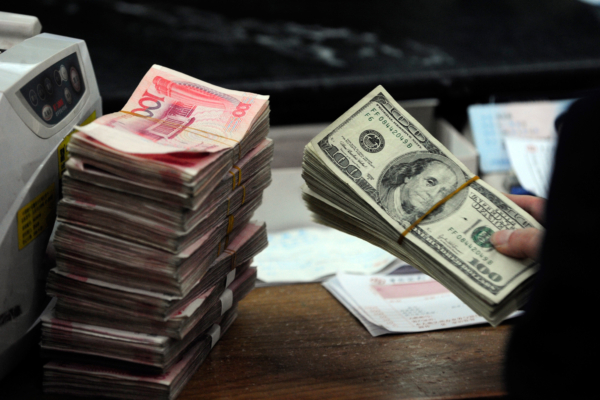A retired couple in Shenzhen with a total monthly pension income of 12,000 yuan found themselves in a situation of bankruptcy despite their high debt reaching 120 million yuan. The news of their bankruptcy application made headlines on May 11.
According to reports from various media outlets including the Chinese “Guangzhou Daily” on May 10, the Intermediate People’s Court of Shenzhen recently issued a bankruptcy liquidation application notice. The announcement revealed that the 63-year-old man Mr. Liu and his 62-year-old wife Ms. Niu, both retired, declared their financial status. Ms. Niu reported a monthly income of 6,528.47 yuan, owned two properties in Shenzhen worth a total of 4.4 million yuan, and had a bank deposit of 22,096.2 yuan. Mr. Liu had a monthly income of 6,221.94 yuan, owned four commercial properties in Shenzhen worth 500,000 yuan in total, had a car valued at 16,000 yuan, and a bank deposit of 42,811.65 yuan. Their combined total debt amounted to approximately 126.88 million yuan.
The notice also indicated that Ms. Niu and Mr. Liu filed for individual bankruptcy liquidation as separate cases, which were consolidated and published under different case numbers by the Shenzhen Intermediate People’s Court on April 8, 2025. However, the announcement did not disclose the reasons for their massive debts.
Responding to inquiries regarding the case, a staff member of the Shenzhen Intermediate People’s Court stated to Upstream News, “The case is currently in the stage of publicizing the individual bankruptcy application review.” In addition, a staff member of the Shenzhen Bankruptcy Administration Office mentioned, “The court issued the application review notice online rather than the acceptance notice. The purpose of the review notice is to solicit feedback from informed individuals and verify the truthfulness of the applicant’s information.”
In another bankruptcy application notice released by the Shenzhen Intermediate People’s Court, a 37-year-old woman named Ms. Zhou reported a monthly salary of 4,784 yuan and a balance of 11,592.27 yuan in her housing provident fund account. However, she declared debts exceeding 25.4 million yuan, far beyond her capacity to repay. Court officials stated, “The case is currently in the stage of publicizing the individual bankruptcy application review.”
Following the release of these bankruptcy announcements, there is growing interest in whether the individual bankruptcy applications will ultimately be accepted by the court.
According to an analysis by Lawyer Yang Jiangsu, President of the Shenzhen Bankruptcy Administrators Association, reported by Observer Net on May 11, personal bankruptcy is a complex procedure that requires meeting specific conditions based on individual circumstances. One fundamental requirement is continuous residence in Shenzhen and participating in Shenzhen social insurance for at least three years as a natural person. If individuals lose the ability to repay debts due to production operations, living expenses, or insufficient assets to settle all debts, they can apply for bankruptcy liquidation, restructuring, or settlement according to regulations. Bankruptcy applicants are expected to adhere to the principle of honest credit reporting their true financial status.
Personal bankruptcy occurs when an individual’s assets fall short of their debts, leading the court to decide whether to discharge a significant portion of the debt.
Regarding the acceptance of bankruptcy applications, analysis by Shenzhen Bankruptcy Court staff reported by Hong Net on March 11 outlined several reasons for rejecting individual bankruptcy liquidation applications:
1. Debtors fail to meet the criteria of losing the ability to repay debts and the difficulty of restoring that capacity.
2. Debtors cannot explain the reasons for indebtedness or provide appropriate evidence.
3. Debtors’ main debts result from extravagant spending, improper disposal of property rights, reducing property values, mismatched investment activities, illegal business operations, or engaging in activities that impede the bankruptcy process.
4. Debtors obstruct the bankruptcy procedure, fail to follow the personal bankruptcy restructuring plan, evade fulfilling legal obligations, or fail to comply with court rulings to discharge unpaid debts within eight years, among other situations.

